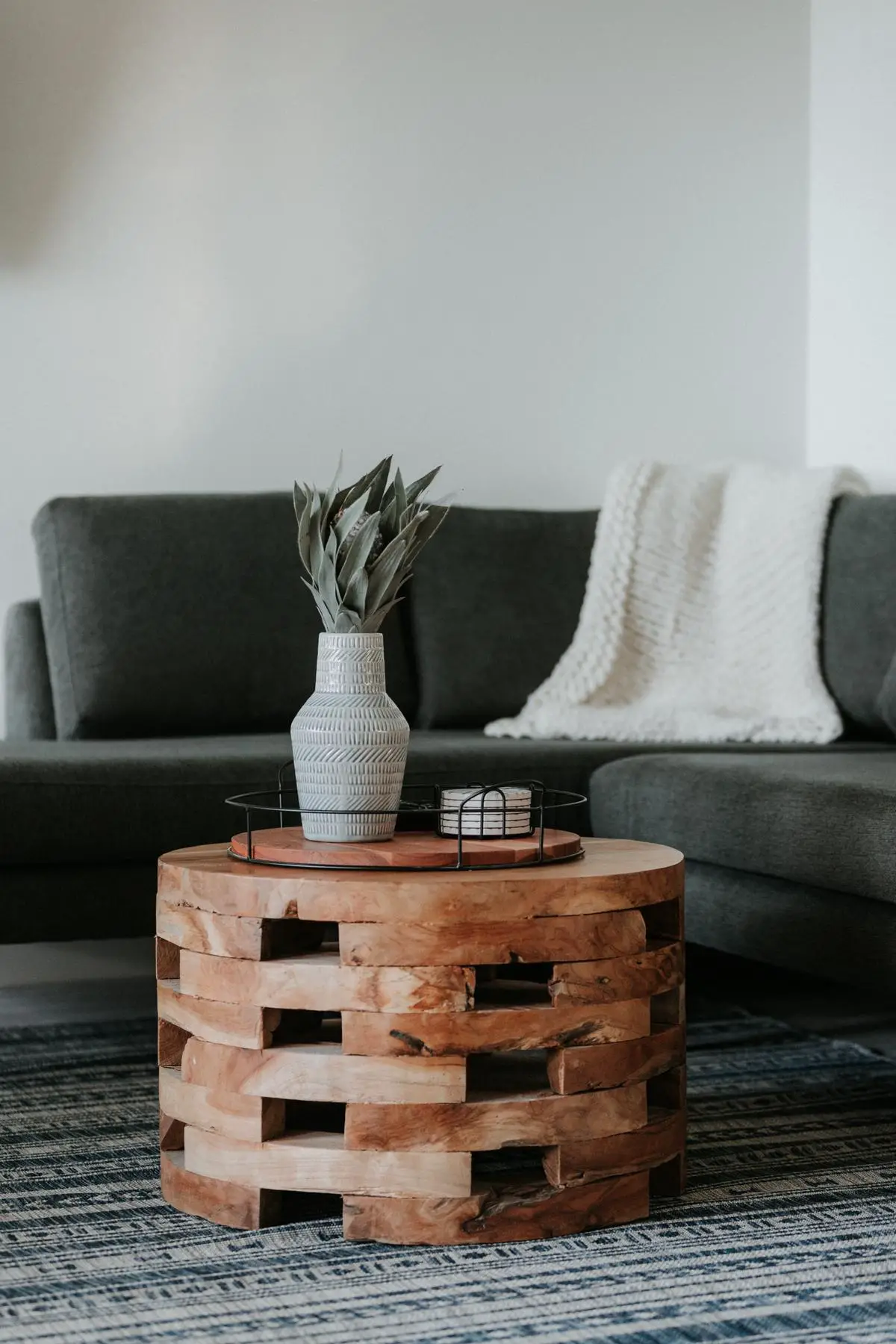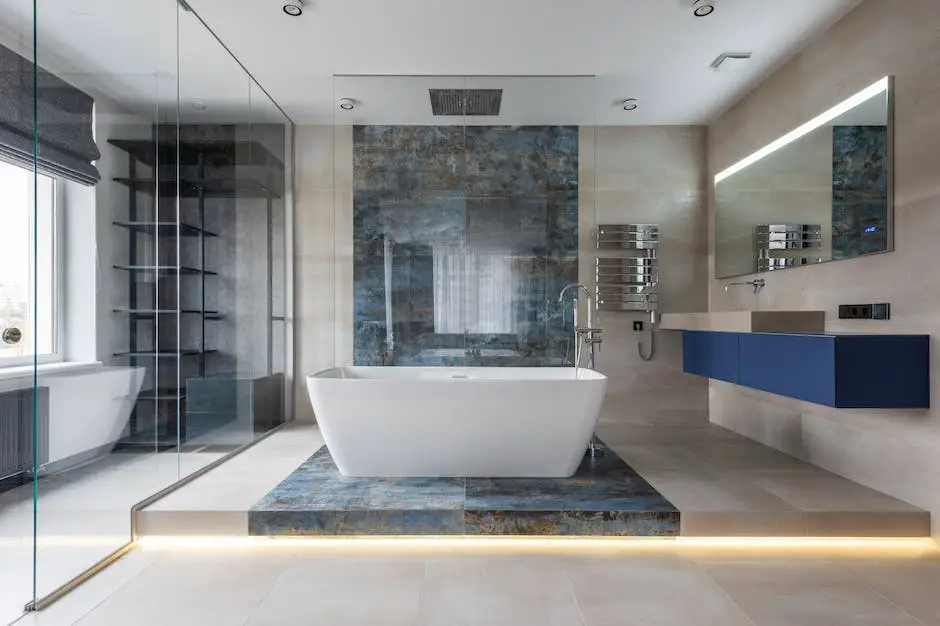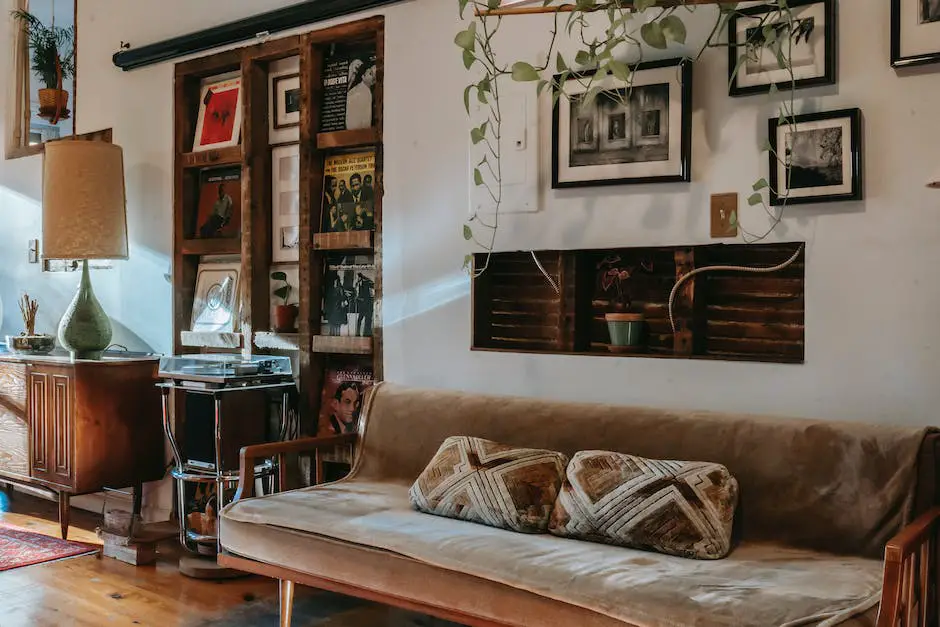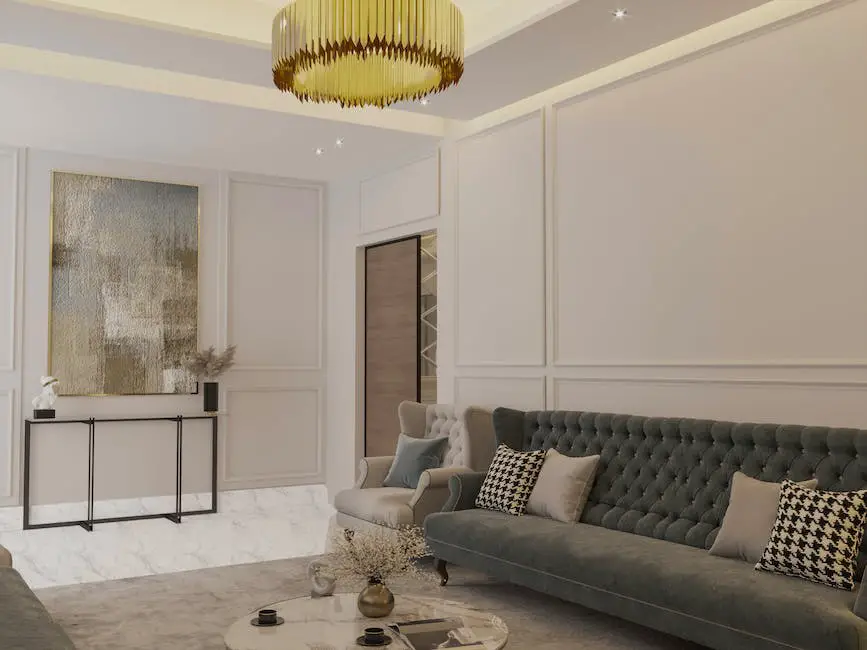Delving into the world of interior design, one cannot help but encounter the enduring influence of IKEA and its signature minimalist style. With a powerful blend of Scandinavian origins, sleek design, and a penchant for simplicity, this iconic brand has become synonymous with affordable and functional home furnishings. This piece explores the roots and key elements of IKEA minimalism, along with practical tips and product selections to help you incorporate this style into your home, all while keeping sustainability and eco-friendly practices in mind.
Origins of IKEA Minimalism
The Roots of IKEA’s Minimalist Style
The roots of IKEA’s minimalist style can be traced back to its Scandinavian origins, particularly Swedish and Danish design principles. These principles emphasize simplicity, functionality, and affordability, which are also the core values of IKEA. Scandinavia, a region in Northern Europe that includes Denmark, Norway, and Sweden, is known for its long, dark winters and limited resources. These factors have greatly influenced the design aesthetics in this region, which aims to create practical, user-friendly, and aesthetically appealing furniture with utmost consideration for available resources.
The Functionality Aspect of Scandinavian Design
One of the most significant influences on IKEA’s minimalist style is the functionality aspect of Scandinavian design. Since the inception of Scandinavian design standards, functionality has been at the heart of its creations. It prioritizes a clutter-free living environment and focuses on practicality. IKEA applies this principle to its furniture design, incorporating features like additional storage and space-saving innovations that make the most of small living areas. This emphasis on utility ensures that their furniture is not just visually appealing but also serves a purpose and brings value to customers’ lives.
The Affordability of IKEA’s Minimalistic Approach
Affordability has always been a cornerstone of IKEA’s minimalistic approach. The company has a firm belief that good design should be accessible to all, regardless of their budget. To achieve this goal, IKEA often employs cost-effective production methods and efficient use of materials, which ultimately result in affordable yet high-quality products. This commitment to affordability has allowed the brand to disrupt the furniture industry, breaking the notion that stylish and functional furniture must come with a hefty price tag.
The Simplicity of Scandinavian Design
The simplicity of Scandinavian design has a symbiotic relationship with IKEA’s minimalist style. The clean lines, natural materials, and understated colors that are characteristic of Scandinavian design also form the basis of IKEA’s aesthetic. This aesthetic is both visually appealing and timeless, ensuring that their products can seamlessly integrate into various interior design styles and remain relevant for years to come. The focus on simplicity also encourages thoughtful design, resulting in furniture that is easy to assemble and adapt, further solidifying IKEA’s popularity among a diverse customer base.
Sustainability in IKEA’s Minimalist Approach
IKEA’s minimalist approach is not only known for its clean and functional design but also its strong emphasis on sustainability. The Scandinavian design ethos incorporates environmental consciousness as a core value, showcasing the use of natural materials like wood and renewable resources in their creations. IKEA shares this eco-friendly mindset, aiming to make its products more sustainable by integrating recyclable materials, reducing waste, and continuously improving production processes. With these principles at its core, IKEA’s minimalist design style promotes a clutter-free and functional living environment while contributing to a greener and more sustainable world.

Photo by zapsizzle on Unsplash
Key Elements of IKEA Minimalism
Minimalist Design Principles of IKEA
One key element of IKEA’s minimalist design is the use of clean lines in their furniture and home accessories. This design principle streamlines items, reducing them to their most basic form, which results in a modern and clutter-free aesthetic. Clean lines can be seen in various IKEA products such as flat-pack tables, chairs, and bed frames, showcasing simplicity without sacrificing stability or functionality. By marrying sustainability and minimalist design principles, IKEA continues to gain worldwide recognition and appreciation for its affordable, functional, and environmentally conscious home furnishing solutions.
Neutral Colors
Another notable feature of IKEA’s minimalist style is the use of neutral colors. The brand often employs a color palette that includes whites, grays, and beiges in their products and showcases. By using these colors, they create a timeless and flexible design that can easily adapt to various personal styles and preferences. Neutral colors also evoke a sense of calm and serenity, which is essential in achieving a minimalist aesthetic. In addition, these colors are versatile, allowing customers to easily mix and match products seamlessly within any living space.
Efficient Use of Space
The efficient use of space is another essential element in IKEA’s minimalist design philosophy. Their products are thoughtfully created to maximize functionality without occupying too much space in a room. This approach caters to contemporary living arrangements, where space is often limited. Examples of space-saving IKEA products include wall-mounted shelves, stackable chairs, and multi-functional furniture with built-in storage, such as bed frames with drawers or tables that can double as a desk. The overall goal is to provide the customer with practical solutions for organization and storage, while maintaining a visually appealing, uncluttered environment.
Sustainability and Affordability
IKEA’s minimalist design also places considerable emphasis on sustainability and affordability. Many of their products are made from sustainable materials, such as wood sourced from responsibly managed forests. Moreover, their innovative flat-pack packaging design has not only become synonymous with the brand, but also reduces shipping costs and resources, which in turn enables them to maintain reasonable prices for their customers. This commitment to sustainability and affordability makes IKEA’s minimalist style accessible to a wide range of individuals and families.
Flexibility
The hallmark of IKEA’s minimalist style is its flexibility, allowing customers to easily adapt and customize products based on their personal preferences and needs. For instance, their modular storage systems and sofas offer countless configurations, ensuring that IKEA’s minimalist design can be seamlessly integrated into homes with various layouts and sizes. This adaptability appeals to a diverse clientele and is a crucial aspect of their design philosophy, which includes clean lines, neutral colors, efficient use of space, sustainability, and affordability.

IKEA’s Minimalist Furniture
IKEA’s reputation for stylish, affordable, and minimalist furniture continues to attract customers worldwide. The iconic Billy bookcase exemplifies this minimalist approach, having been a staple in homes since its design by Gillis Lundgren in 1979. Its simple, clean design optimizes storage while easily fitting into various living spaces. Additionally, the Billy bookcase is available in multiple sizes, colors, and optional glass doors, making it adaptable to a wide range of interior styles. This flexibility ensures that IKEA’s minimalistic offerings continue to resonate with consumers globally.
The Lack Series
Another minimalist favorite from IKEA is the Lack series, which encompasses side tables, coffee tables, shelves, and TV units. Featuring sleek lines with a minimalist design aesthetic, Lack items are lightweight and easy to move, making them ideal for small spaces or those who enjoy frequently changing their home layout. The tables and shelves come in a variety of finishes, ensuring they complement any color scheme. Additionally, their affordable price point makes them an attractive option for budget-conscious individuals.
The Malm Series
A classic example of a minimalist and versatile IKEA product is the Malm series, which includes bed frames, dressers, and bedside tables. The Malm bed frame is particularly popular for its clean lines, flush-to-the-floor design, and under-bed storage options, which contribute to its streamlined aesthetic. The dressers and bedside tables share a similar design simplicity, with ample storage and easy-to-open drawers. The Malm series’ straightforward design allows it to easily blend with various styles, from contemporary to mid-century modern.
The Poäng Chair
For those searching for seating options with minimalist aesthetics, look no further than IKEA’s Poäng chair. Designed by Noboru Nakamura in 1976, the Poäng chair is not only visually appealing but also renowned for its comfort. The chair features a bentwood frame, providing both flexibility and support, while the simple cushions come in an array of colors and materials. The timeless design of the Poäng chair lends itself to adaptation, with new cover options and frame finishes regularly introduced to remain current and on-trend.
The Kallax Shelving Unit
The Kallax shelving unit is a minimalist favorite, known for its geometric design and practical storage capabilities. The cubes can be left open for display purposes or fitted with insertable storage boxes to conceal clutter. Available in various sizes and orientations, Kallax units are perfect for use as room dividers, bookcases, or TV stands. Their modularity allows for diverse configurations, making them a versatile and attractive choice for those looking to incorporate minimalist furniture into their homes.

Declutter and Organize with IKEA Minimalist Style
IKEA’s minimalist style revolves around decluttering and organizing your living space to create a simplified and harmonious environment. This can be achieved by focusing on functional storage solutions that maximize the use of available space.
IKEA offers numerous minimalist storage products, such as the KALLAX series of shelving units. These adaptable shelves come in different sizes and can be customized with inserts to cater to your specific storage needs. Utilize KALLAX shelves to store books, showcase decorative items, and keep household essentials organized in a visually appealing manner.
Functional and Multi-Purpose Furniture
Another important aspect of IKEA minimalist style is the use of multi-functional furniture. These pieces help reduce clutter by serving more than one purpose.
For example, the FRIHETEN sofa bed offers both seating and a comfortable bed for guests, while the under-seat storage provides hidden storage space for extra linens and pillows. Similarly, the NORDLI bed frame comes with built-in storage options, eliminating the need for a separate dresser.
By choosing furniture that serves multiple functions, you can create an organized and uncluttered living space that still offers all the necessary comforts.
Wall-Mounted Storage Solutions
Utilizing wall-mounted storage solutions is another way to embrace IKEA minimalism while keeping your living spaces organized.
IKEA offers a variety of wall-mounted shelves and storage solutions that help make the most of vertical space in your home while keeping your belongings properly organized.
For example, the minimalist EKET series of wall-mounted storage units can be used in various configurations to suit your unique needs and help keep your living area or office clutter-free. Installing floating shelves throughout your home can also provide additional storage and display space without taking up valuable floor space.
Designated Storage Spaces
The IKEA minimalist style emphasizes the importance of keeping surfaces clear of excess items to maintain a clutter-free living environment. To achieve this goal, it’s crucial to have designated storage spaces for every item in your home. Utilizing entryway storage solutions such as the TJUSIG shoe rack and PÄRKLA storage case can help ensure shoes, bags, and other daily essentials have a designated space, reducing clutter and maintaining an organized and welcoming entrance.
Organizing Your Kitchen
Begin by incorporating the IKEA minimalist style into your kitchen organization. The VARIERA series of storage solutions offer a wide range of customizable options for organizing your drawers and cabinets. Choose from adjustable dividers, pot lid holders, and plate organizers to create a tailored organizing system that works best for your space.
Additionally, wall-mounted kitchen storage solutions like the KUNGSFORS range can help keep kitchen countertops clear of excess items while providing easy access to frequently used ingredients and utensils, ultimately creating a more functional and orderly cooking space.

Incorporating IKEA Minimalism into Home Design
Incorporating IKEA Minimalist Style
After organizing your kitchen, continue to revolutionize the way you experience your living spaces by incorporating IKEA minimalist style into other areas of your home. This design approach focuses on simplicity, functionality, and a connection to nature, which can transform not only your kitchen but also the overall look and feel of your home.
The Living Room
The living room is often the central hub of the home, and it’s essential to embrace simplicity and functionality in this area.
- Select furniture pieces that offer clean lines and emphasize an open, uncluttered environment.
- IKEA offers a variety of minimalist sofa, chair, and coffee table options.
- Choose a color palette that is mainly neutral, with a few complementary pops of color in accent pieces, such as cushions and artwork.
The Bedroom
IKEA’s minimalist style can help create a tranquil and peaceful retreat in the bedroom.
- Prioritize storage solutions that allow for a clutter-free environment.
- IKEA offers bed frames with built-in storage, as well as sleek and slim wardrobes and dressers.
- Select bedding and curtains in soothing, neutral colors with minimal patterns to enhance the minimalist atmosphere.
The Kitchen
The IKEA minimalist approach focuses on streamlining and providing ample storage to reduce visual clutter in the kitchen.
- Opt for simple designs with a focus on maximizing storage and organization.
- Consider a monochromatic color scheme, such as all-white or gray, with accents of stainless steel or wood.
- IKEA offers numerous options for kitchen organization, such as drawer dividers and pull-out pantry systems.
The Bathroom
IKEA’s minimalist style can also be implemented in the bathroom with their range of sleek, functional storage options.
- Consider wall-mounted cabinets and shelves for additional storage that won’t consume valuable floor space.
- Opt for simple, unadorned bathroom accessories to maintain a clean and minimal aesthetic.
Lighting and Minimalist Style
When considering a minimalist approach to home design, it is essential not to overlook the critical role that lighting plays in achieving this look. IKEA’s minimalist style emphasizes the importance of cohesive and straightforward lighting solutions throughout your home.
- Choose fixtures with clean lines and materials such as metal or glass, reflecting the simplicity of the minimalist design.
- Ensure that the selected lighting options not only provide appropriate illumination but also complement and enhance the overall minimalist aesthetic.

Sustainability and IKEA Minimalism
IKEA’s Commitment to Sustainability and Minimalist Design
As a global furniture and home goods retailer, IKEA has consistently championed sustainability and eco-friendly living. This commitment spills over into their product offerings, packaging, and business operations, as they promote the minimalist design principles that dovetail with environmentally-conscious choices.
Emphasizing simplicity and resource efficiency, minimalism encourages mindful consumption and waste reduction. IKEA’s dedication to upholding these principles in their minimalist designs contributes to fostering eco-friendly living and a more sustainable future.
IKEA’s Minimalist Designs and Environmental Impact
One of the most significant ways IKEA’s minimalist designs support a sustainable way of life is by reducing the company’s overall environmental footprint. Minimalist design often focuses on smaller, slimmed-down structures that use fewer materials, thereby lessening the demand for natural and human resources. As a result, the company uses more environmentally friendly materials in its products, such as water-based coatings for furniture surfaces and reclaimed wood. Additionally, IKEA is working towards achieving 100% renewable energy consumption, which would further support their sustainability initiatives.
Reusability and Waste Reduction in IKEA’s Minimalist Designs
Besides the materials used in their products, IKEA also contributes to sustainability through their emphasis on reusability and waste reduction. Flat-pack furniture, a trademark of IKEA’s minimalist design, is designed to be easily assembled and disassembled, making it simpler to transport and repurpose as needed. This approach enables customers to extend the life of their furniture and minimize waste produced at the end of the product lifecycle. Furthermore, IKEA’s recycling and waste management initiatives aim to divert waste from landfills and minimize the environmental impact of their operations.
Conscious Consumption and Minimalist Design
An essential aspect of embracing sustainable living is practicing conscious consumption. IKEA’s minimalist designs encourage customers to make mindful choices when purchasing and maintaining home goods. By focusing on the true functionality of each item and reducing excessive adornment, IKEA empowers customers to buy what they need rather than what they merely desire. This drives a reduction in unnecessary consumerism, which in turn, mitigates the level of waste and emissions produced in the manufacturing and disposal of products.
IKEA’s Innovative Product Lines and Collaborations
Finally, IKEA’s innovative product lines and collaborations, such as their collaboration with the solar energy company, Solstråle, support sustainable living by integrating renewable energy systems into minimalist designs. This approach demonstrates the potential synergy between functional, minimalist design and eco-friendly technology. As IKEA continues to pioneer in the realm of minimalism and sustainability, it is evident that the company remains dedicated to finding integrative solutions for a more sustainable future and leaving a positive impact on the environment.

Throughout this exploration, it becomes clear that the minimalist philosophy championed by IKEA permeates every aspect of their designs, products, and business practices. Embracing this unpretentious and soothing style not only allows for the creation of beautifully organized living spaces but also fosters an eco-conscious mindset for a more sustainable future. By integrating IKEA minimalism into your home, you’ll be inviting an atmosphere of tranquility, functionality, and harmony that both you and our planet can appreciate.


